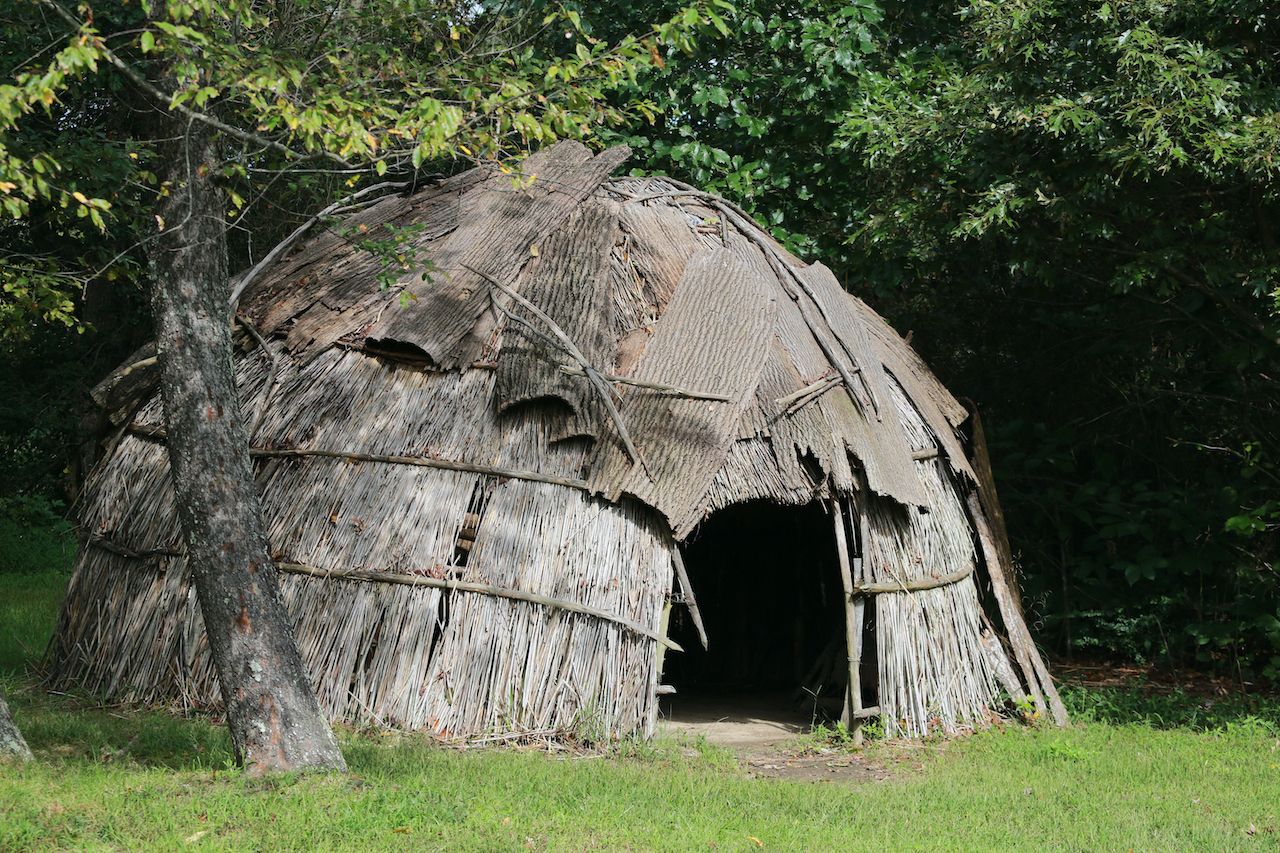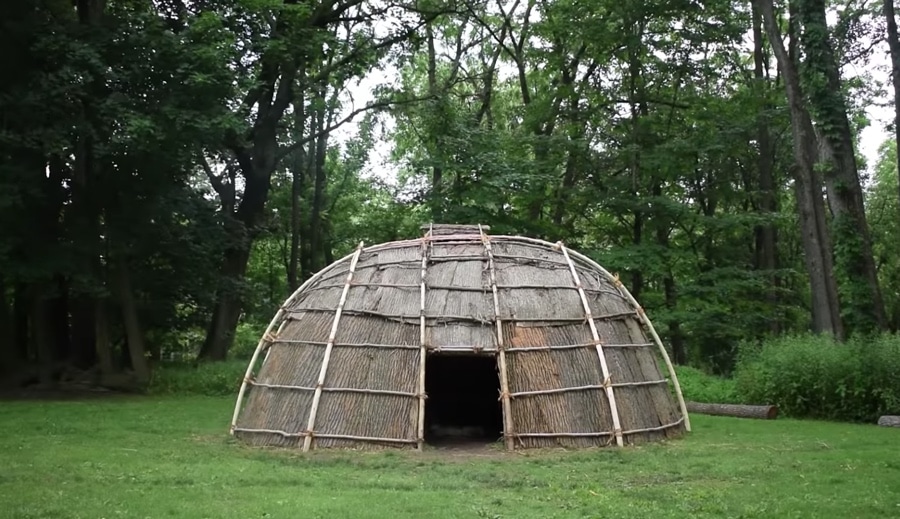
Certainly! Here is a 1200-word journalistic article about wigwams.
Beyond the Teepee: Unveiling the Enduring Legacy of the Wigwam
For many, the image of a Native American dwelling immediately conjures the conical silhouette of a teepee, standing stark against a vast prairie sky. This iconic image, largely popularized by Hollywood and historical narratives centered on Plains tribes, has inadvertently overshadowed the rich diversity of Indigenous architecture across North America. Among the most misunderstood and frequently misidentified of these traditional structures is the wigwam – a dwelling far removed in form, function, and cultural context from its better-known cousin.

The wigwam, often confused with the teepee, is in fact a distinct and remarkable architectural marvel, a testament to the ingenuity, adaptability, and deep connection to the environment held by the Indigenous peoples of the Eastern Woodlands and Great Lakes regions of North America. It is a structure that speaks volumes about sustainable living, community, and a profound understanding of natural resources. This article delves into the true nature of the wigwam, exploring its construction, cultural significance, geographical prevalence, and its enduring legacy in the modern world.
Dispelling the Myth: Wigwam vs. Teepee
The most crucial step in understanding the wigwam is to differentiate it from the teepee. The distinction is not merely semantic; it reflects fundamental differences in lifestyle, environment, and available resources.
The Teepee (Tipi): Primarily associated with the nomadic or semi-nomadic tribes of the Great Plains (like the Sioux, Cheyenne, Blackfoot), the teepee is a conical tent, typically constructed from long poles covered with buffalo hides or, later, canvas. Its design is inherently portable, allowing it to be quickly erected and dismantled to follow buffalo herds or move with changing seasons. The smoke flaps at the top are a hallmark, allowing for efficient ventilation of a central fire.
The Wigwam: In stark contrast, the wigwam is a dome-shaped or rectangular dwelling made from a framework of bent saplings, covered with natural materials such as bark, woven mats, reeds, or animal hides. Its construction is more permanent than a teepee, though still adaptable for seasonal use, and it is intrinsically tied to the forested environments where its builders resided. The word "wigwam" itself is derived from the Algonquian word "wiigwaam," meaning "their house," or "dwelling." This linguistic root immediately grounds the structure in the Indigenous languages and cultures of the Northeast and Great Lakes.
The misconception largely stems from a lack of comprehensive education on the diverse cultures of Native America. As educators at living history museums like Plimoth Patuxet (formerly Plimoth Plantation) often emphasize, "The wigwam was the primary dwelling of the Wampanoag people, and many other Algonquian-speaking tribes of the Eastern Woodlands. It’s important to understand that Indigenous peoples across the continent developed distinct housing solutions perfectly suited to their specific environments and ways of life."
Anatomy of a Wigwam: A Masterpiece of Natural Engineering
The construction of a wigwam is a testament to sophisticated engineering using readily available natural materials. The process typically began with selecting flexible saplings, often from trees like birch, willow, elm, or maple, which could be bent without breaking.

-
The Frame: Saplings were first driven into the ground in a circular or oval pattern, forming the base. These were then bent inward, crisscrossing and lashed together at the top, creating a sturdy, resilient dome-shaped framework. Additional saplings might be woven horizontally through the vertical ones to add stability and create a lattice-like structure. The size could vary significantly, from small family dwellings to larger structures accommodating multiple families or serving as communal gathering spaces.
-
The Covering: This was perhaps the most variable element, depending on the tribe, the season, and the specific resources of the region.
- Bark: Large sheets of birch bark (known for its waterproof qualities and ease of peeling), elm bark, or cedar bark were highly prized. These sheets were overlapped like shingles and secured to the frame with cordage made from plant fibers or animal sinew.
- Woven Mats: In areas where bark was less abundant or for seasonal variations, mats woven from reeds (like cattails or bulrushes) or grass were used. These mats provided excellent insulation and could be easily removed and transported if the family moved seasonally.
- Hides: Animal hides, though less common than bark or mats for the primary covering due to their weight and processing time, might be used for additional insulation or for doorways.
- Textiles: In later periods, after contact with Europeans, canvas or other cloth might be incorporated.
-
Features: A crucial element of any wigwam was the smoke hole at the top, allowing smoke from the central fire to escape. A movable flap, often made of bark or hide, could be adjusted to control airflow and protect against rain or snow. The doorway was typically a simple opening covered by a hide or mat, providing privacy and protection from the elements.
The beauty of wigwam construction lay not just in its functionality but also in its sustainability. Materials were harvested responsibly, often regenerating quickly, and the entire structure would eventually return to the earth, leaving minimal environmental impact.
Geographical and Tribal Distribution
The wigwam was the predominant dwelling type for hundreds of distinct Indigenous nations across the Eastern Woodlands, Great Lakes, and parts of the Northeast regions of North America. These areas are characterized by dense forests, abundant water sources, and distinct seasonal changes.
Key tribes and nations that traditionally built and inhabited wigwams include:
- Algonquian-speaking peoples: This vast linguistic family includes tribes like the Wampanoag (Massachusetts), Narragansett (Rhode Island), Mohegan (Connecticut), Lenape (Delaware, New Jersey, Pennsylvania), Powhatan (Virginia), and various Abenaki groups (Maine, Vermont, New Hampshire).
- Anishinaabe peoples: This includes the Ojibwe (Chippewa), Odawa (Ottawa), and Potawatomi, primarily found around the Great Lakes region (Michigan, Wisconsin, Minnesota, Ontario).
- Menominee: A tribe of Wisconsin, known for their elaborate elm bark wigwams.
- Some Iroquoian groups: While the longhouse is the iconic dwelling of many Iroquois Confederacy nations, some smaller, more mobile Iroquoian communities, or those on the fringes of their territory, also utilized wigwam-style structures, particularly for seasonal camps.
The availability of flexible saplings and large sheets of bark in these heavily forested regions made the wigwam an ideal and efficient shelter solution. It provided warmth in winter, cool shade in summer, and excellent protection from rain and wind.
Life Within the Wigwam: A Hub of Community and Culture
Stepping inside a wigwam, one would immediately feel the warmth and sense of enclosure. The interior was remarkably well-organized and functional.
At the center, a fire pit served as the heart of the home, providing heat for warmth and cooking. The smoke, drawn upward through the smoke hole, was a constant presence, imbuing the air with the scent of woodsmoke and often acting as an insect deterrent. Around the perimeter, raised sleeping platforms or beds, often covered with animal hides or woven mats, provided comfortable resting places. Storage areas for tools, personal belongings, and dried foods were typically built into the frame or placed strategically along the walls.
Wigwams were more than just shelters; they were living entities, integral to the social fabric of the community. They housed families, provided a safe space for storytelling, rituals, and the transmission of cultural knowledge from elders to younger generations. The circular or oval shape itself often held spiritual significance, reflecting the cycles of nature and the interconnectedness of all life.
"The wigwam was our world," an imagined quote from an Algonquian elder might suggest. "It was where we ate, slept, shared stories, and knew our family was safe from the storm. It connected us to the earth, to the trees that gave their lives for our shelter, and to the sky through the smoke hole."
In some communities, especially during certain seasons, larger communal wigwams might be constructed, capable of housing multiple families or serving as meeting lodges for ceremonies and tribal councils. These larger structures demonstrated a sophisticated understanding of joinery and structural integrity.
Adaptability and Sustainability: A Timeless Design
While not as mobile as a teepee, the wigwam was far from a permanent, immovable structure. Its design allowed for a degree of adaptability crucial for the seasonal movements of many Eastern Woodland tribes. Communities often moved between summer fishing and farming camps and winter hunting grounds.
For shorter moves, the bark or mat coverings could be rolled up and transported, leaving the sapling frame intact for reuse upon return. For longer migrations, new frames would be constructed at the destination, with the coverings brought along. This efficient use of resources and the ability to adapt to changing environmental conditions exemplify the sustainable practices inherent in Indigenous lifeways. The materials, being natural, would eventually decompose and return to the earth, leaving minimal lasting impact on the landscape. This contrasts sharply with the often destructive footprint of modern construction.
The Wigwam in the Modern World: Education and Reclamation
Despite its historical prevalence and architectural brilliance, the wigwam continues to be overshadowed by the teepee in popular culture. This persistent misconception contributes to a broader lack of understanding about the diversity and complexity of Indigenous cultures.
However, there is a growing movement, led by Indigenous communities and educational institutions, to reclaim and accurately represent the wigwam. Living history museums, tribal cultural centers, and educational programs now prominently feature wigwams, offering visitors the chance to see, touch, and learn about these incredible structures firsthand. These initiatives aim to:
- Correct historical inaccuracies: By showcasing the wigwam, they challenge the monolithic image of Native American housing and highlight regional diversity.
- Promote cultural pride: For Indigenous youth, seeing their ancestral homes accurately represented fosters a sense of pride and connection to their heritage.
- Inspire sustainable practices: The wigwam’s principles of using local, renewable resources and minimizing environmental impact offer valuable lessons for contemporary sustainable building.
- Encourage respect and understanding: By learning about the wigwam, people gain a deeper appreciation for the ingenuity, knowledge, and resilience of Indigenous peoples.
The enduring presence of the wigwam in educational settings and its continued construction by some Indigenous communities today serve as a powerful reminder that history is not static. It is a living narrative, constantly being enriched and refined by those who hold its truths.
Conclusion
The wigwam is far more than just a quaint historical dwelling; it is a profound symbol of ingenuity, adaptability, and a deep, respectful relationship with the natural world. From its carefully bent sapling frame to its expertly placed bark coverings, every element speaks to centuries of accumulated knowledge and a harmonious existence with the environment.
By moving beyond the pervasive stereotype of the teepee, we begin to uncover the true breadth of Indigenous architectural brilliance and cultural diversity. The wigwam stands as a testament to the sophisticated understanding of engineering, sustainability, and community that characterized the Indigenous nations of the Eastern Woodlands and Great Lakes. As we continue to learn from and appreciate these remarkable structures, we not only honor the past but also gain invaluable insights into building a more sustainable and culturally informed future. The wigwam, in its simple elegance, urges us to look deeper, listen closer, and recognize the enduring legacy of the original inhabitants of this land.


